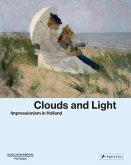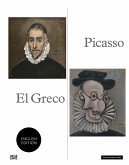Piet Mondrian had a decisive influence on the development of painting from figuration to abstraction. On the occasion of his 150th birthday, Mondrian Evolution is dedicated to his multifaceted work and artistic development. Initially working in the tradition of late-nineteenth century Dutch landscape painting, Symbolism and Cubism subsequently took on great significance for him. It was not until the early 1920s that the artist focused on a wholly non-representational pictorial vocabulary, concentrated on the rectangular arrangement of black lines with surfaces in white and the primary colors blue, red, and yellow. In separate chapters, this path is traced through motifs such as windmills, dunes, the sea, farms reflected in the water, and plants in various forms of abstraction.
PIET MONDRIAN (1872-1944) was one of the pioneers of abstract art. Hailing from a strict Calvinist family, the artist became famous for his compositions of black lines and rectangular fields in primary colors, but his early work was influenced by 19th century Dutch landscape painting.
PIET MONDRIAN (1872-1944) was one of the pioneers of abstract art. Hailing from a strict Calvinist family, the artist became famous for his compositions of black lines and rectangular fields in primary colors, but his early work was influenced by 19th century Dutch landscape painting.






















